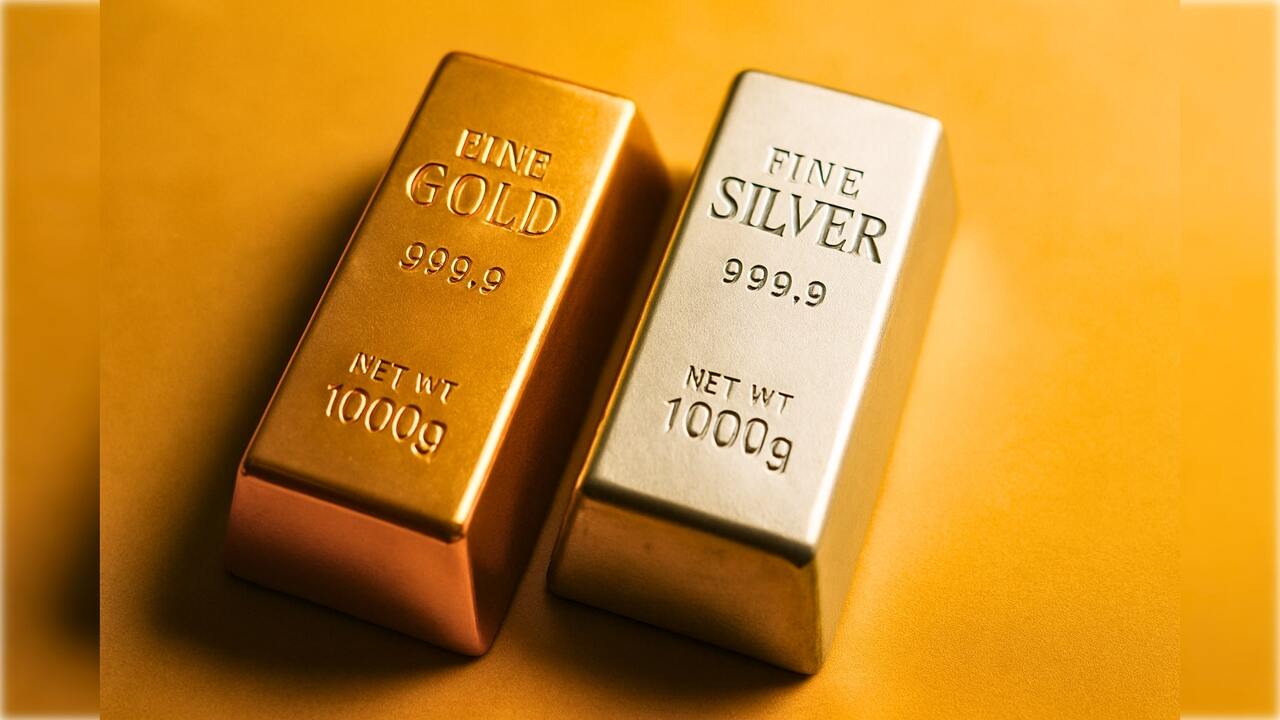(Jesse Colombo, Money Metals News Service) Gold and silver remain in consolidation, but their technical setups are still strong—despite the confusing crosscurrents caused by unpredictable tariff developments.
It’s been a volatile and tumultuous week, marked by the Fed meeting, a slew of key economic data—including the U.S. GDP report—and a flood of corporate earnings reports.
On top of that, tariff-related developments and speculation have added to market uncertainty. Low-volume summer trading conditions have further amplified the volatility.
Amid this backdrop, gold has held up well, while silver has experienced a modest pullback. However, both remain in strong technical positions, and my outlook on them is unchanged. In this update, I’ll share what I’m currently seeing in gold and silver, along with updates on copper and the U.S. dollar.
Let’s begin with gold, specifically COMEX gold futures, which I prefer to track due to its tendency to respect key $100 price increments—often forming significant support and resistance levels such as $3,200, $3,300, $3,400, and so on.
As I’ve highlighted in recent updates, gold has been in a consolidation phase or trading range since April.
This is a healthy development, allowing the metal to digest earlier gains and work off its overbought condition.
Such sideways movement is especially common during the “dog days” of summer, when news flow generally slows (this week being an exception) and trading volumes tend to drop as much of the financial world heads into vacation mode. And notably, that’s exactly what happened last summer as well—before gold launched into another powerful leg of its bull market in the fall.
At the moment, I’m watching and waiting for gold to make its next move, with a bias toward an upside breakout above the $3,500 resistance level—at which point I believe the rally will quickly resume. That said, it’s worth noting that gold may continue consolidating through August, as we’re still in the typically slow summer season.
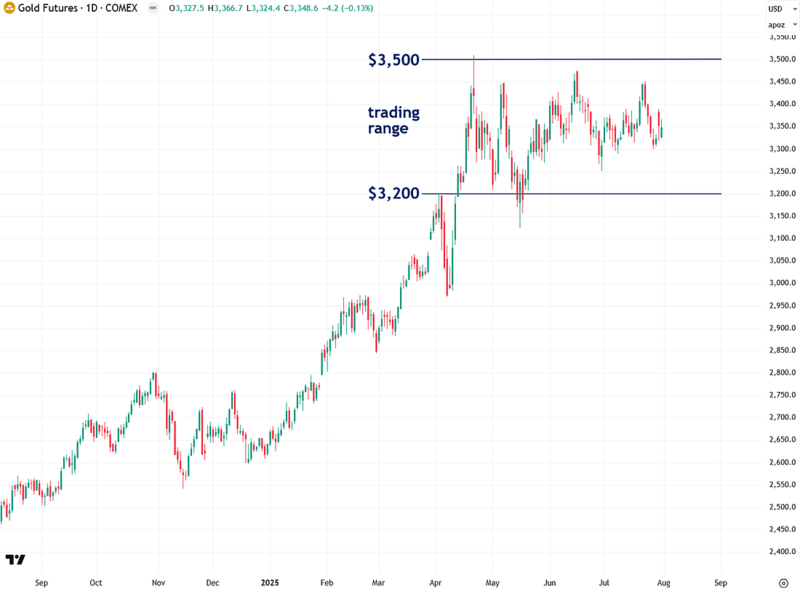
It’s also worth noting that this trading range appears in gold priced in other currencies as well, which adds confirmation—plus, it removes the influence of U.S. dollar fluctuations. For instance, gold priced in euros shows a similar pattern:
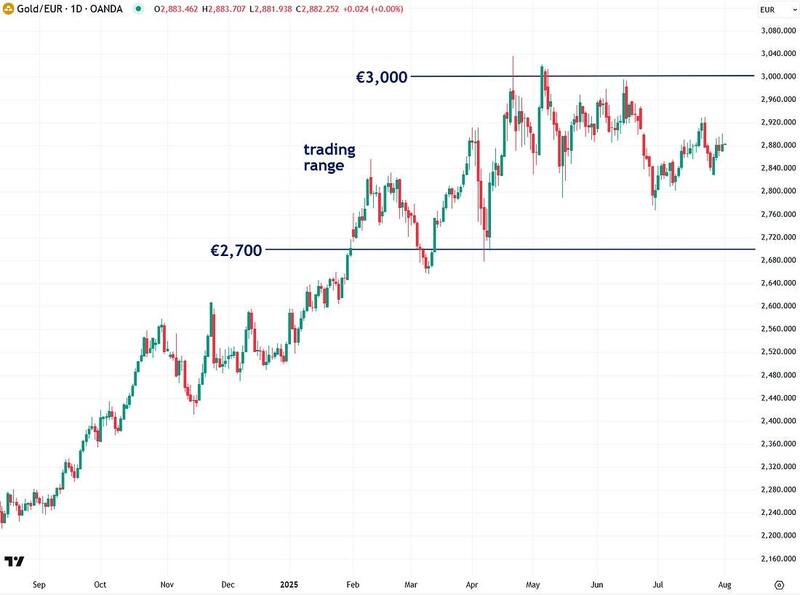
It’s also worth highlighting that these consolidation phases are nothing new. Since the bull market began in early 2024, we’ve already seen three such periods—the first two of which resolved to the upside and led to significant additional gains:
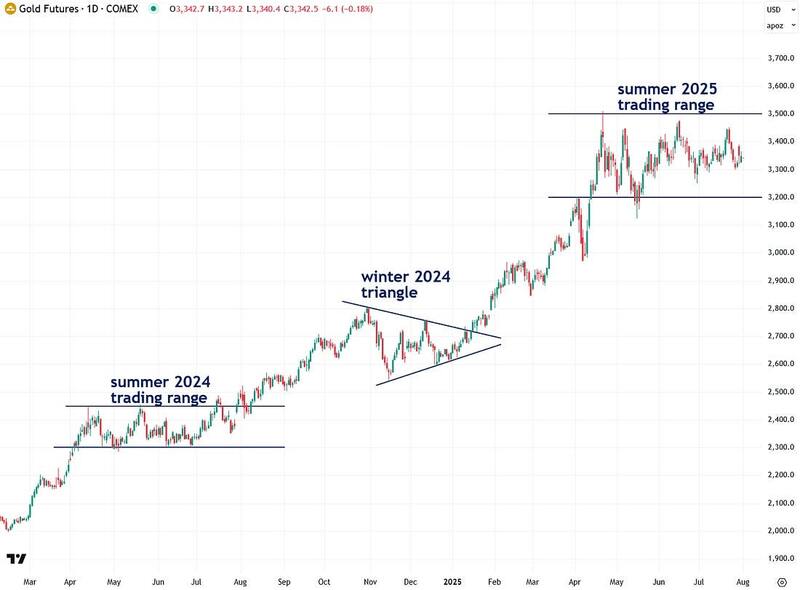
Next, let’s turn to silver, specifically COMEX futures, which I track closely due to its tendency to respect key $1 increments—forming clear support and resistance levels such as $32, $33, $34, and so on. In early June, silver finally broke above its long-standing $32–$35 resistance zone—a ceiling that had held firm for over a year, from May 2024 to June 2025.
In my view, this breakout marked the official beginning of silver’s next major bull market.
As with all financial markets, nothing moves in a straight line. After briefly touching $40, silver has since pulled back—causing concern among less experienced or less confident investors. But not me—I’m not shaken at all. This looks like a routine pullback or re-test of the $32–$35 zone, which now serves as a major support level.
That kind of re-test isn’t surprising, especially during the low-volume summer months—after all, volume is the lifeblood of the markets. Silver’s bull market remains fully intact and should continue as long as it holds above that key support zone.
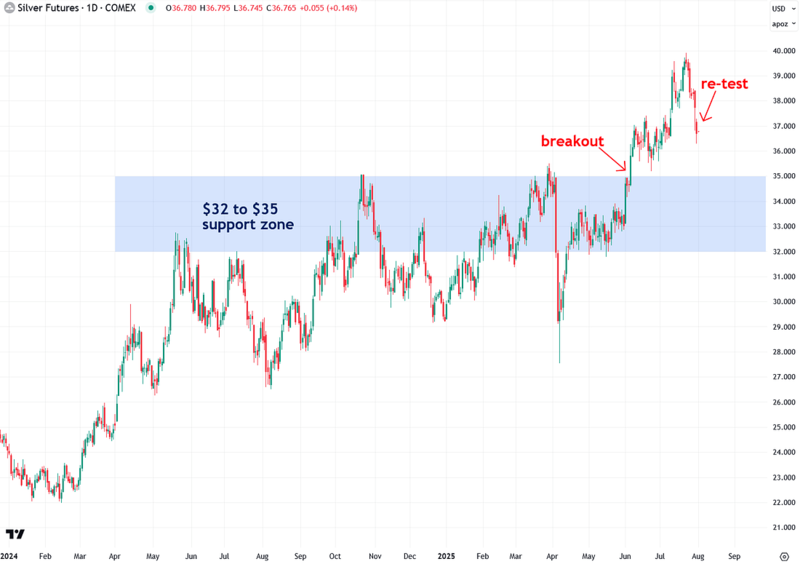
One factor that has recently disrupted silver’s behavior is the highly unusual price action in U.S. domestic copper futures—an asset that, along with gold, strongly influences silver.
It began with a dramatic 13% surge on July 8th, following former President Donald Trump’s announcement that he would impose a 50% tariff on copper imports.
However, the market was blindsided yesterday when prices plunged 22% after Trump confirmed the tariff—but excluded copper ores, concentrates, and refined products like cathodes, which are the basis for the benchmark U.S. COMEX copper futures contract. This unexpected exclusion triggered a sharp reversal and left many traders reeling.
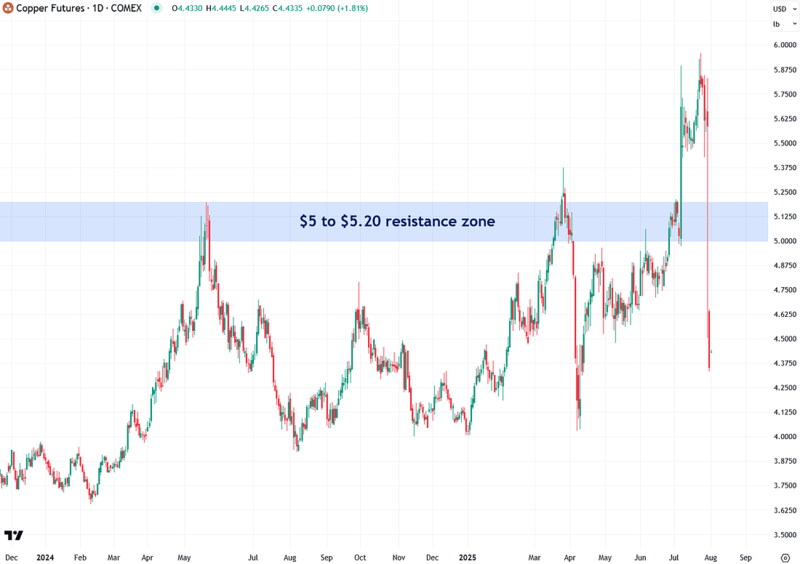
The extreme volatility in U.S. domestic copper futures has significantly distorted the readings of my proprietary Synthetic Silver Price Index (SSPI)—an indicator I developed to help validate silver’s price action and filter out potential false breakouts.
The SSPI is calculated as the average of gold and copper prices, with copper scaled by a factor of 540 to prevent gold from dominating the index. Although silver itself isn’t part of the SSPI’s calculation, the index typically tracks silver’s movements closely—except when disrupted by unexpected government policy shifts.
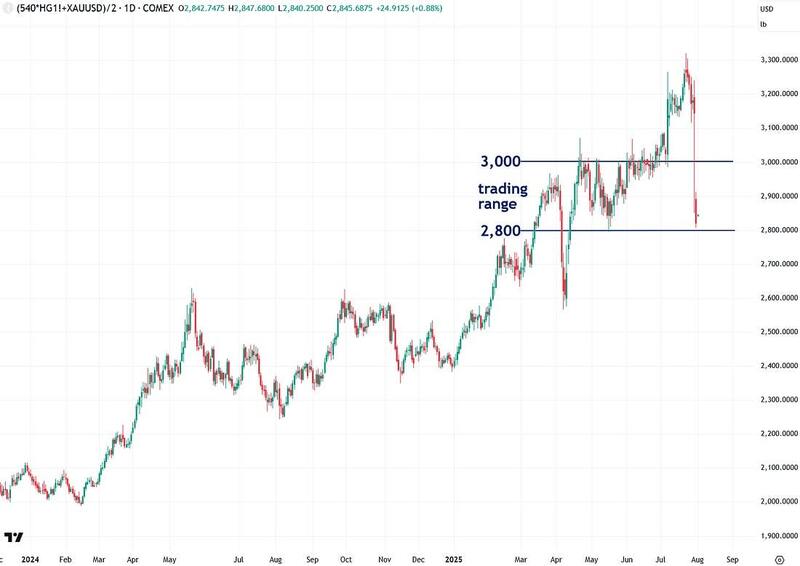
It’s important to note that the recent tariff surprises from the Trump administration have primarily impacted U.S. domestic copper futures, while having a far more limited effect on global copper prices—as evidenced by the relatively stable performance of copper futures on the London Metal Exchange (LME):
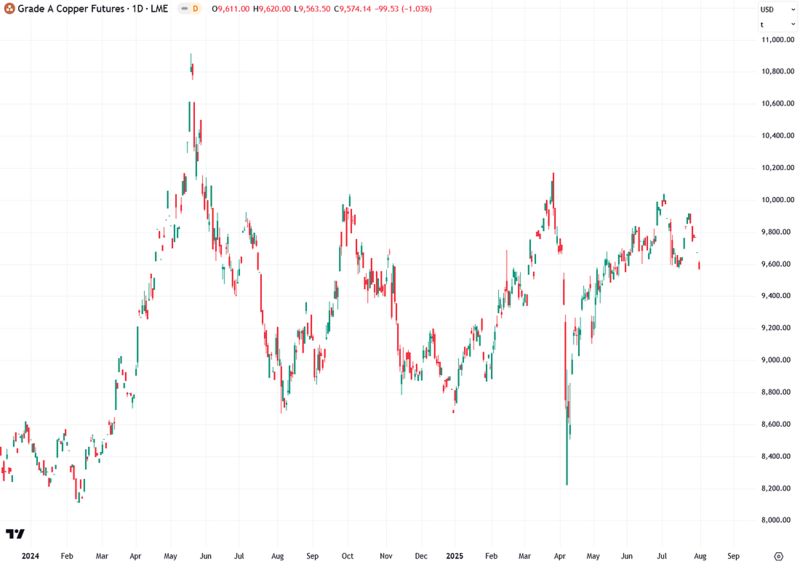
The same holds true for copper futures on China’s Shanghai Futures Exchange (SHFE), which have also remained relatively unaffected by the U.S. tariff news:
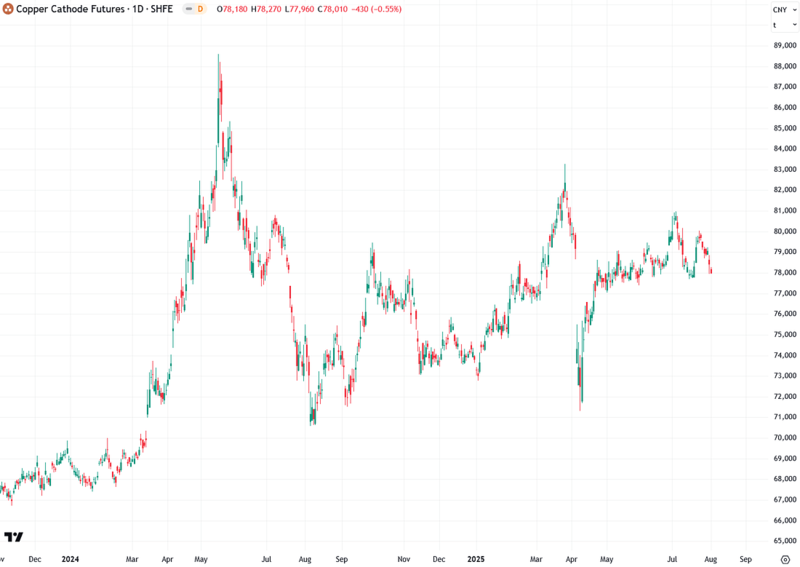
Now let’s turn to the U.S. Dollar Index, which has strengthened recently—driven by renewed trade deal optimism, including a 15% tariff agreement that helped the U.S. and EU avoid a trade war, along with a better-than-expected U.S. GDP report.
Since the dollar typically moves inversely to precious metals, this recent strength has exerted some downward pressure on gold and silver, as is often the case.
At the moment, the U.S. Dollar Index has rebounded to the key 100 resistance level—a critical threshold that has played a significant role over the past few years. Although the index broke below this level in the spring, it’s now attempting to reclaim lost ground.
A confirmed close above 100 would be a key signal to watch—but there’s also a real possibility the Dollar Index could fail at this level and resume its decline. In short, it’s at a pivotal, make-or-break moment. I’ll be closely watching to see how this unfolds.
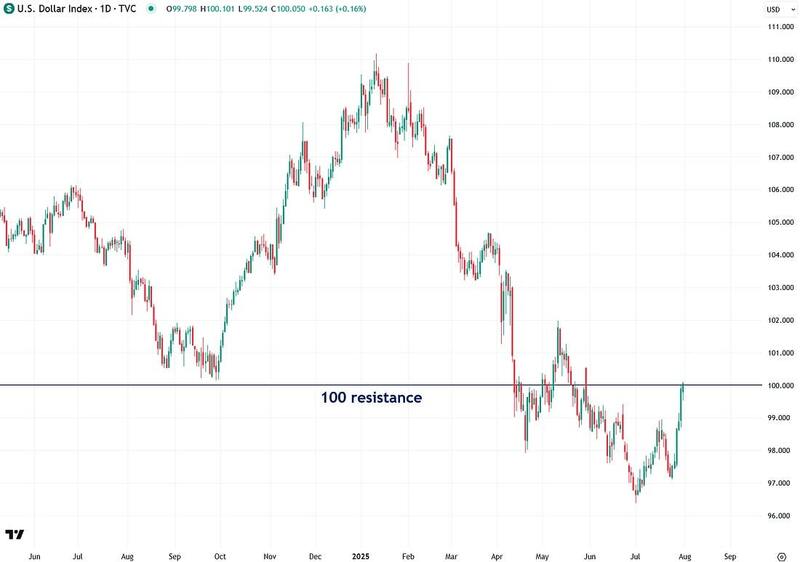
To summarize, gold and silver remain in consolidation, but that alone is no cause for concern—nor does it undermine the bullish case for either metal.
We’re still in the heart of summer, when trading volume is light and much of the financial world is in vacation mode. Meanwhile, the Trump administration’s rapid and unpredictable tariff announcements have injected fresh volatility and uncertainty into the markets, making short-term movements harder to interpret.
Even so, both gold and silver remain in solid technical uptrends—they’re simply taking a breather. I believe clarity will return soon, and I’ll continue monitoring developments and keeping you updated.
If you found this report valuable, click here to subscribe to The Bubble Bubble Report for more content like it.
Jesse Colombo is a financial analyst and investor writing on macro-economics and precious metals markets. Recognized by The Times of London, he has built a reputation for warning about economic bubbles and future financial crises. An advocate for free markets and sound money, Colombo was also named one of LinkedIn’s Top Voices in Economy & Finance. His Substack can be accessed here.

